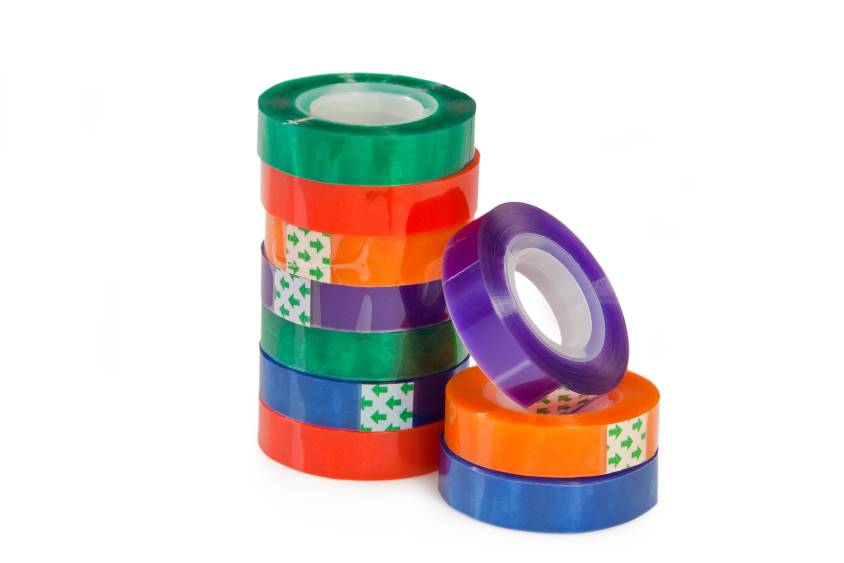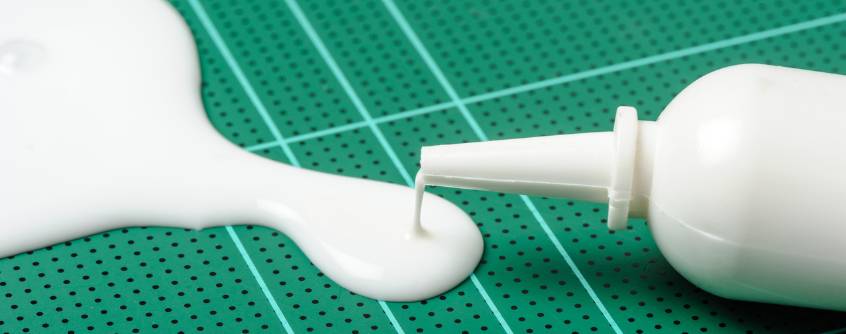When it comes to making, building, or constructing something, there are many key parts to it.
The glue (pun intended) of any project is the adhesive that keeps it all together! Adhesives, also known as glue, cement, or paste, come in a variety of shapes and sizes.
Each type of adhesive is meant for a specific type of material and use, so it’s important to know how to tell the difference.
Adhesives have many uses in a variety of fields from construction to the arts and science.
If you think about it, there are very few things in life that don’t have some sort of adhesive keeping them together.
Whether you’re looking to do some patching up or crafting, or you’re curious to learn about adhesives, you’ve come to the right place!
Here’s everything you need to know about all the different adhesives to make sure you know to handle any project you come across.
What is an adhesive?
Before getting into the different types, it’s important to first know exactly what an adhesive material is.
An adhesive is any material or substance capable of sticking to or creating a bond with another.
Adhesives come in many shapes and forms and are suitable for a wide range of materials.
They can be categorized into a few different groups, depending on their state, chemical makeup, or how they bond.
To help you with your project, here are some of the main categories of adhesives to be aware of.
Classification by Physical Form
Adhesives can be used or spread manually or by using tools or equipment. The easiest way to classify adhesives is by their physical form when applied.
Liquid
Liquid adhesives are the most common and although they may be easy to apply, they can leak or spill during application.
They can take a long time to cure, but applying thin layers helps to remedy this issue.
Paste
Paste adhesives are highly viscous, thick pastes and can be quite difficult to spread alone.
Because of this, they are usually applied through a tube or caulking gun and are great for when you need to fill in gaps with adhesive.
Film
Adhesive films come in pre-cut rolls, lengths, or shapes and provide easy application.
Most pressure sensitive adhesive products fall into this category. Film adhesives are available in thicknesses between 2-8mm for different applications.
Pellets
Adhesive pellets are a different group altogether and usually need to be inserted into a hot melt gun and then melted or sprayed.
Most hot melt or thermosetting adhesives fall into this category
Classification by Structure

This is often the most important kind of classification for adhesives. This classification separates adhesives by their structure and how they solidify.
Hot melt
Hot melt adhesives are most commonly used in industrial situations.
They are most often appreciated for their eco-friendliness, safety, and shelf life.
They need to be melted and brought to liquid form and can then be used to coat entire surfaces.
As they cool, they form a solid and secure polymer. Hot melt adhesives can be EVA-based and APAO-based. You can also find certain pressure-sensitive varieties as well.
Reactive hot melt
Another type of adhesive that is liquid when heated and solidifies as it cools is the reactive hot melt.
Unlike the simple hot melt, the reactive hot melt forms additional chemical bonds as it cools resulting in a stronger glue once cured.
This kind of adhesive has a higher resistance to water and moisture and a higher temperature and chemical tolerance.
Pressure-sensitive
Pressure-sensitive adhesives are made up of low-modulus elastomers, which means they don’t need a lot of pressure to deform.
They are great for use on wet surfaces and are quite durable for light-load applications.
You can get most pressure-sensitive adhesives as tapes or labels and are not the best for home repairs or structural work.
Thermosetting
Thermosetting adhesives are a different group altogether and are made up of two parts; resin and hardener.
The two parts are mixed together to get the desired setting time and adhesive effect.
Although you can get thermosetting adhesives in a one-part form, it’s unlikely because the two parts need to be kept at low temperatures.
If kept at higher temperatures, the two components can react prematurely and leave you with a much shorter shelf life of the product.
Pot life with thermosetting adhesives refers to how long it takes for the two parts to bond after mixing and is very important for this type.
Short pot time mixtures will harden too quickly and long pot times can delay the setting process.
Contact
Last but not least are contact adhesives which are elastomeric. These adhesives need to be applied on both items together that you plan on bonding.
Contact adhesives contain a solvent that will evaporate during the curing process.
This evaporation will join your bonded items into direct contact with each other.
These adhesives are most commonly used in rubber cement or countertop laminates.
Classification by Load-Bearing Capability
The last and most important categorization of adhesives you need to know is their load-bearing capability.
This refers to how well the adhesive can hold different substrates and materials together.
Structural
Structural adhesives are strong and often come in the form of pastes, liquids, and films.
These adhesives are built for heavier loads and work well in a construction and industrial setting.
They have a low glass transition temperature (Tg), after which the polymer transitions into a soft and rubbery material. Epoxy, cyanoacrylate, urethane, and acrylic adhesives fall into this category.
Non-structural
Non-structural adhesives are built for light loads and are used more in aesthetic applications and purposes.
These, along with semi-structural adhesives are more affordable but they are not suitable for all types of projects.
Non-structural adhesives are usually used as secondary fasteners, rather than the main form of adhesion.
Semi-structural
Last but not least are semi-structural adhesives which provide a happy medium between the previous two types.
Semi-structural adhesives offer more strength and support than non-structural adhesives.
As strong as they are, they are not as secure as structural ones. Depending on the project, you can substitute semi-structural adhesives in place of the other two varieties.
So there you have it! With this guide in mind, you’re all caught up on all things adhesives!
Whether you’re looking to redo your kitchen, glue down some furniture, or patch up some holes, this guide has got you covered.
When choosing the right adhesive for your project, make sure to do your research and to know the different types of glue.
Look at the physical form, structure, and load-bearing capabilities to make your decision. Good luck and happy gluing!

